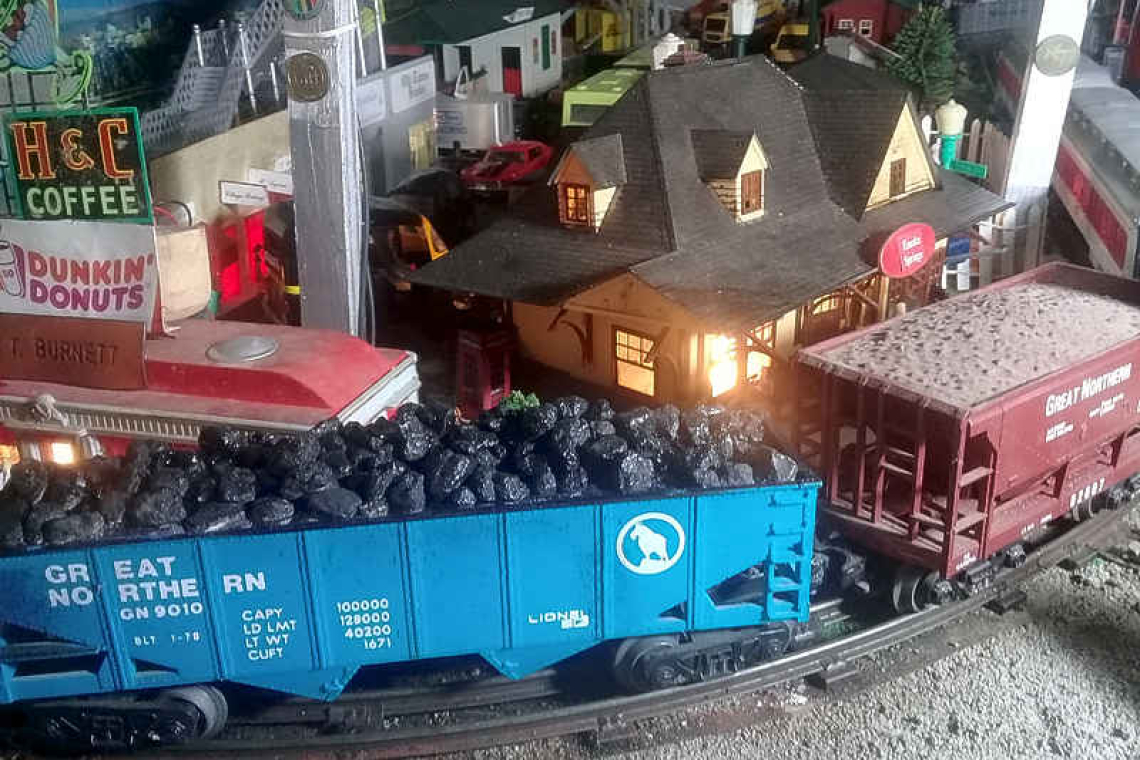By Roger, age 11
Living in the Caribbean, we worry more about cooling our homes than heating them. But there are places that the houses must be heated or water in pipes can freeze and the pipes break. Yes, home-heat in some parts of the world is a must. One source of heat has been coal. Wood had been the prime source of heat for centuries, but coal became popular and beat out wood by 1885. Coal would be burned in furnaces and the heat would warm the house.
We found out about coal from Mr. Don, a tourist friend of ours. He brought a bag of coal for us to load in the freight cars of our model train sets. No more fake plastic coal cars for us! We now have real coal! So we decided to learn more about coal. This is what we discovered: There are several types of coal. There is soft coal that looks a lot like charcoal. It is dark grey-brown, very dusty and crumbles easily, so it leaves a mess. But it is easy to light the fire with this soft coal. It is called Peat. Burning peat in your fireplace can leave your home a bit smoky.
Anthracite is a harder coal. It is found mostly in the United States, often mined in Pennsylvania. Anthracite looks pretty, because it’s a hard, shiny, pure black substance. At first, it was just pushed aside. While it is almost smoke- and dust-free, anthracite can be hard to start burning. You have to warm it up before it would light.
Coal, in general, is an efficient source of energy. For instance, one ton of anthracite coal equals about 8,200-kilowatt hours of electricity. But another fuel source was found to be even better – gas and oil. Gas and oil heaters started appearing in homes during the 1920s. Furnaces and boilers were changed over to burn natural gas, oil or propane. Within 20 years, 25 percent of homes used oil or gas, while 72 percent still relied on coal. Today, 57 percent of American homes use natural gas. About 10 percent use oil or propane with most of the remaining homes using electricity for heat.
So why do long trains transport coal across the United States countryside? Simple. Electrical power plants burn coal to generate the electricity that powers all the buildings, homes, offices, stores and factories. Some power plants use hydro-electricity, meaning they use river water flowing through a turbine to create electricity, but most burn coal to boil water and the steam turns the turbines. There are lots of other ways to create electrical power, but people often keep using old methods for a lot of reasons. What do you think about all these ideas?
So the next time you see a picture of a long train of cars loaded with coal, you know it is probably going to an electrical power plant to generate electricity and to still help warm a lot of people’s homes. Then flip on your air conditioner and be glad you live in the tropics and do not have to worry about your pipes freezing and breaking.







